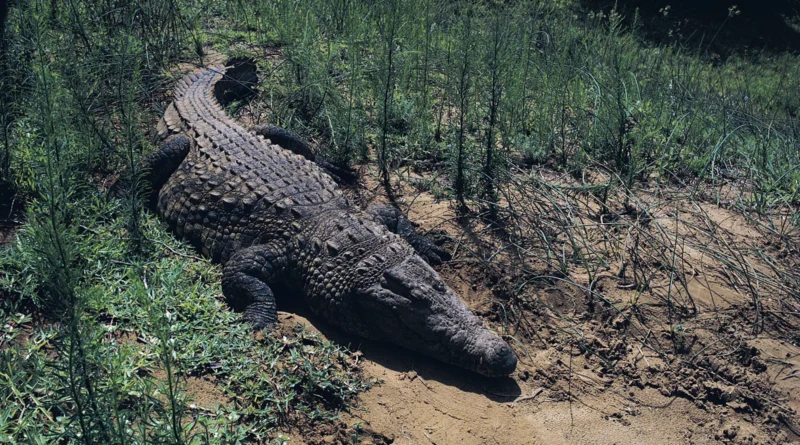Nile Crocodile Conservation Programs
Nile Crocodile Conservation Programs The Nile crocodile (Crocodylus niloticus), Africa’s largest reptile, is a vital part of the continent’s ecosystems. As an apex predator, it plays a key role in controlling populations of fish and other aquatic species, ensuring ecological balance. However, despite their resilient nature, Nile crocodiles are under increasing threat from human activities. Habitat destruction, poaching, and human-wildlife conflict are some of the main challenges facing these majestic reptiles. This article explores the efforts being made to conserve Nile crocodiles and highlights the importance of these programs.
Key Conservation Challenges
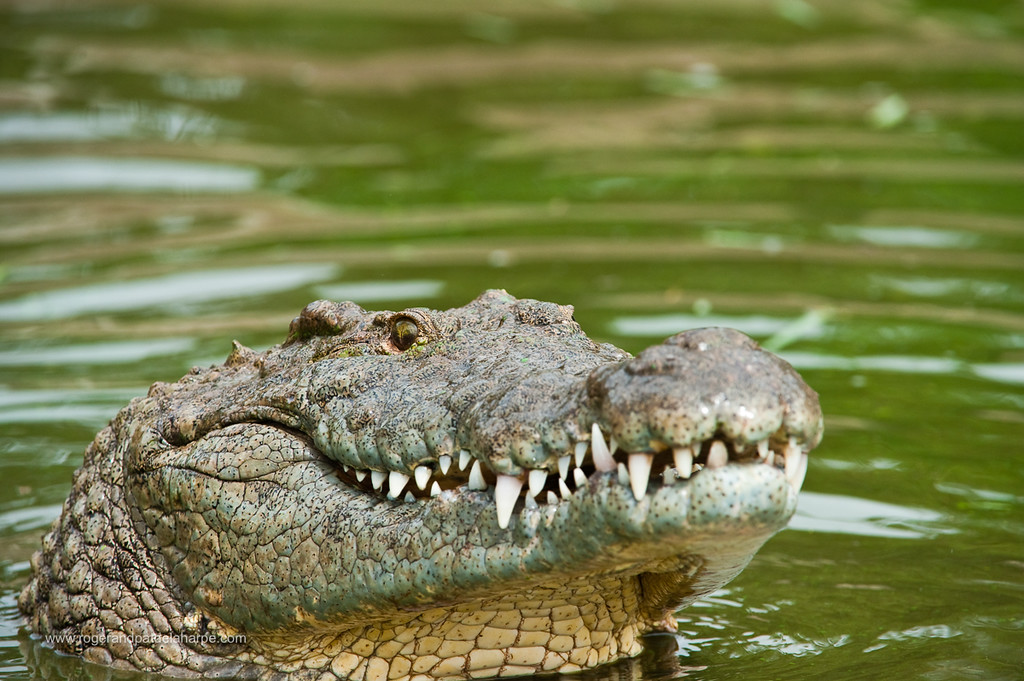
Nile crocodiles face a range of conservation challenges, many of which stem from human activities:
- Habitat Destruction and Degradation: Wetlands, rivers, and lakes—natural habitats for Nile crocodiles—are being destroyed or altered by human activities such as agriculture, dam construction, and urbanization. This loss of habitat significantly reduces the areas where crocodiles can live and hunt.
- Illegal Hunting and Poaching: Crocodiles are hunted for their skins, which are highly valued in the fashion industry for luxury goods like bags and belts. They are also killed for their meat and body parts, which are sometimes used in traditional medicine. Despite regulations, poaching remains a significant threat to the species.
- Pollution and Climate Change: Pollution from agriculture and industry, such as chemicals and plastic waste, contaminates the waterways that crocodiles depend on. Additionally, climate change is altering water levels and temperatures, affecting their breeding and survival.
- Public Awareness and Education: A lack of awareness about the ecological importance of crocodiles contributes to their persecution. Misunderstanding and fear often lead to people killing crocodiles in retaliation for attacks or encroaching on their habitat.
- Weak Law Enforcement: In some regions, laws protecting Nile crocodiles are not effectively enforced, allowing illegal hunting and habitat destruction to continue unchecked.
Table: Overview of Nile Crocodile Conservation Programs and Strategies
| Conservation Focus | Description | Examples |
|---|---|---|
| Protected Areas and Reserves | Designated areas that protect crocodile habitats from human interference. | Kruger National Park (South Africa), Selous Game Reserve (Tanzania) |
| CITES Regulation | International agreement regulating the trade of crocodile products to reduce poaching and over-exploitation. | CITES Appendix II classification of Nile crocodiles to monitor trade and ensure sustainable use. |
| Captive Breeding Programs | Breeding Nile crocodiles in controlled environments for reintroduction into the wild or sustainable use. | Crocodile breeding centers in zoos and wildlife parks, such as Victoria Falls Crocodile Park (Zimbabwe). |
| Sustainable Use Programs | Involves local communities in sustainable farming and trade of crocodile leather and meat to promote conservation. | Crocodile leather farming in Zambia, community-based crocodile ranching projects. |
| Anti-Poaching and Law Enforcement | Efforts to strengthen laws against poaching and improve enforcement to protect wild crocodile populations. | Anti-poaching patrols in Kenya, increased penalties for poaching in Uganda. |
| Human-Crocodile Conflict Mitigation | Strategies to reduce conflicts between humans and crocodiles, including education, fencing, and compensation. | Secure water access projects in Mozambique, compensation schemes for lost livestock in Botswana. |
| Research and Monitoring Programs | Ongoing studies on crocodile behavior, population trends, and the use of technology in conservation efforts. | Satellite tracking in Uganda, drone monitoring in Tanzania. |
| Community Involvement | Engaging local populations in conservation efforts, ensuring they benefit economically from protecting crocodiles. | Community wildlife reserves in Namibia, ecotourism in Uganda. |
| Ecotourism | Promoting responsible wildlife tourism that benefits conservation and local economies. | Nile crocodile viewing tours in Tanzania’s Selous Game Reserve, ecotourism projects in Uganda. |
This table summarizes key aspects of Nile crocodile conservation programs and highlights examples of each strategy.
Major Conservation Programs and Initiatives
Efforts to conserve Nile crocodiles focus on various strategies aimed at addressing these challenges.
- Protected Areas and Reserves: National parks and wildlife reserves play a crucial role in protecting crocodile populations. Places like South Africa’s Kruger National Park and Tanzania’s Selous Game Reserve provide safe havens where crocodiles are free from poaching and habitat destruction. Community-based conservation areas also empower local people to protect crocodile habitats while benefiting from sustainable land use.
- CITES Regulation: The Convention on International Trade in Endangered Species of Wild Fauna and Flora (CITES) plays an important role in regulating the trade of crocodile skins and other products. By placing restrictions on the trade of Nile crocodile products, CITES has helped reduce the illegal hunting of these animals.
- Captive Breeding Programs: Captive breeding programs in zoos and wildlife centers are helping boost Nile crocodile populations. These programs focus on breeding crocodiles in controlled environments and, in some cases, reintroducing them into the wild to strengthen endangered populations.
- Sustainable Use Programs: Some conservation initiatives advocate for sustainable use as a way to protect crocodiles. Communities are involved in crocodile farming and leather production, which can provide an economic incentive to conserve the species. When done ethically, sustainable use programs ensure that crocodile populations remain healthy while generating income for local people.
- Anti-Poaching and Law Enforcement: Governments and NGOs are working to strengthen anti-poaching laws and improve enforcement. Successful initiatives have led to the arrest and prosecution of poachers, significantly reducing illegal hunting in some areas. Patrols, wildlife protection units, and community cooperation are key components of these efforts.
Human-Crocodile Conflict Management
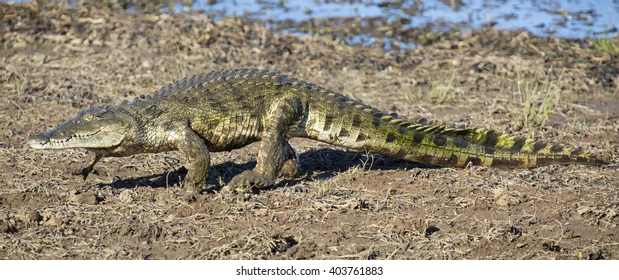
One of the biggest challenges in Nile crocodile conservation is managing conflicts between humans and crocodiles. As human populations grow, people increasingly encroach on crocodile habitats, leading to more frequent encounters.
- Causes of Conflict: Crocodiles often attack livestock or, in rare cases, humans when they feel threatened or when people venture too close to their habitats. These conflicts tend to occur near rivers and lakes where both people and crocodiles depend on water resources.
- Conflict Mitigation Strategies: To address these issues, conservation programs have implemented conflict mitigation strategies. Community awareness campaigns educate people on how to avoid dangerous encounters with crocodiles. In some regions, fencing and warning systems have been set up near crocodile habitats. Compensation programs also provide financial support to those who have lost livestock due to crocodile attacks, reducing the motivation for retaliatory killings.
- Case Studies: In Mozambique, for example, a community-led initiative successfully reduced crocodile attacks by creating secure water access points for people and livestock, minimizing dangerous encounters. This model has since been replicated in other regions.
Research and Monitoring Programs
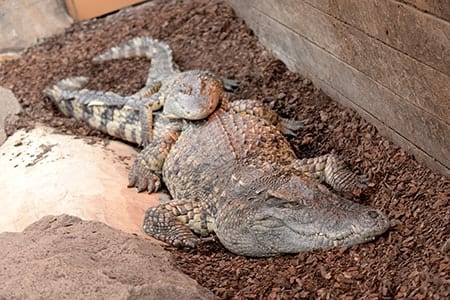
Ongoing research is essential to understanding Nile crocodile behavior and ensuring effective conservation strategies.
- Behavioral Research: Scientists are studying the feeding habits, breeding patterns, and migration routes of Nile crocodiles to better understand how they interact with their environment.
- Monitoring Population Trends: By monitoring crocodile populations, researchers can assess the effectiveness of conservation programs and identify areas where more action is needed. Satellite tracking and drones are increasingly being used to track the movement of crocodiles and gather data on their numbers.
Community Involvement and Ecotourism
Local communities are vital to the success of conservation programs.
- Community Involvement: Conservation efforts that engage local communities are often the most successful. When people living near crocodile habitats are involved in protecting these areas, they are more likely to support conservation initiatives. Community-based conservation also provides economic benefits through jobs in wildlife protection and sustainable farming.
- Ecotourism: Ecotourism is another way that conservation programs generate support for Nile crocodile protection. Visitors who come to see crocodiles in their natural habitats contribute to the local economy while learning about the importance of conservation. Successful ecotourism programs, such as those in Uganda and Tanzania, help raise awareness and fund conservation efforts.
Future Directions for Nile Crocodile Conservation
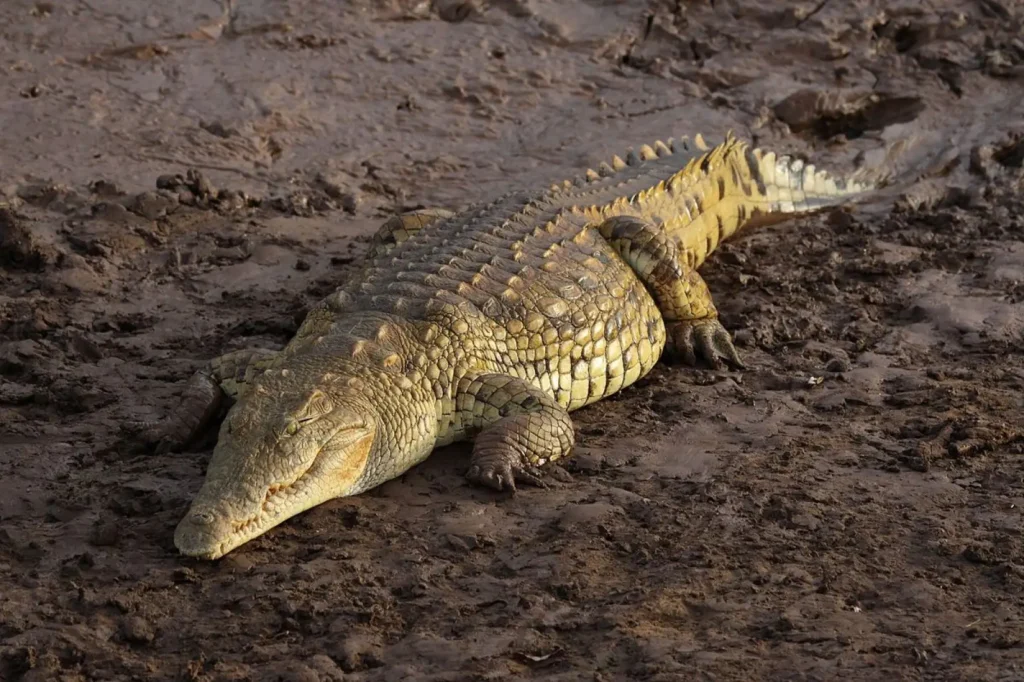
The future of Nile crocodile conservation depends on continued collaboration between governments, NGOs, scientists, and local communities.
- Strengthening Partnerships: Global and local partnerships are key to effective conservation. International organizations, governments, and local communities must work together to protect crocodile habitats, enforce laws, and promote sustainable practices.
- Public Awareness and Education: Expanding educational programs that highlight the importance of Nile crocodiles in maintaining ecosystems is essential. Raising awareness can reduce human-crocodile conflict and encourage support for conservation efforts.
- Research and Funding: Continued research is necessary to address emerging threats such as climate change. Increasing funding for conservation initiatives will ensure that these programs can continue to protect Nile crocodile populations.
- Adapting to Climate Change: As the climate changes, conservation strategies will need to evolve. Ensuring that crocodile habitats are resilient to changes in water levels and temperatures will be a key focus in the coming years.
Conclusion
The conservation of Nile crocodiles is a complex but essential task. While many challenges remain, the efforts of governments, NGOs, scientists, and local communities have led to significant progress. From anti-poaching initiatives to ecotourism, the programs in place are making a difference. But there is still much to be done. With continued support and increased awareness, we can ensure that the Nile crocodile remains a thriving part of Africa’s wildlife for generations to come.
This article can serve as a valuable resource for your website Crocogen, educating readers on the importance of conserving Nile crocodiles.
Tips for Supporting Nile Crocodile Conservation
Choose Sustainable Crocodile Products:
If you buy crocodile leather or other products, ensure they come from certified sustainable sources that follow CITES guidelines. This helps support ethical farming and conservation efforts.
Support Wildlife Conservation Organizations:
Donate to or volunteer with organizations that work to protect Nile crocodiles and their habitats. Groups like the World Wildlife Fund (WWF) and local conservation NGOs are always in need of support.
Promote Responsible Ecotourism:
When visiting crocodile habitats, choose responsible ecotourism operators who prioritize conservation. Your tourism dollars can help fund local conservation projects.
Educate Others About Nile Crocodiles
Spread awareness of the ecological importance of Nile crocodiles. Educating friends, family, and local communities can reduce fear and promote coexistence with these predators.
Participate in Conservation Campaigns:
Join or start campaigns that advocate for stronger wildlife protection laws and better enforcement to reduce poaching and habitat destruction.
Reduce Plastic and Chemical Waste:
Pollution is a major threat to aquatic ecosystems where crocodiles live. By reducing your plastic use and supporting eco-friendly products, you help protect Nile crocodile habitats.
Encourage Conflict Mitigation:
Advocate for humane solutions to human-crocodile conflicts, such as secure water access points or compensation programs for local communities affected by crocodile attacks.
FAQs: Nile Crocodile Conservation
Why are Nile crocodiles important to ecosystems?
Nile crocodiles are apex predators, meaning they sit at the top of the food chain. They help control populations of fish, birds, and other animals, which maintains balance in aquatic ecosystems. Their presence is crucial for the health of rivers, lakes, and wetlands.
What are the biggest threats to Nile crocodiles?
The main threats to Nile crocodiles include habitat loss, poaching for their skins and meat, human-wildlife conflict, pollution, and climate change. Habitat destruction from agriculture, urbanization, and dam construction is especially harmful.
Are Nile crocodiles endangered?
Nile crocodiles are currently listed as “Least Concern” on the IUCN Red List, but their populations are declining in certain areas due to the aforementioned threats. Conservation efforts are necessary to prevent further declines.
What is being done to conserve Nile crocodiles?
Conservation programs focus on several strategies, including protecting their habitats in national parks and reserves, regulating trade through CITES, captive breeding, sustainable use initiatives, and anti-poaching laws. Conflict mitigation strategies and public education also play key roles.
How does CITES protect Nile crocodiles?
CITES (Convention on International Trade in Endangered Species) regulates the international trade of crocodile skins and products. By ensuring that trade is sustainable and legal, CITES helps protect wild populations from over-exploitation.
Can captive breeding help save Nile crocodiles?
Yes. Captive breeding programs in zoos and wildlife centers contribute to conservation by raising crocodiles in controlled environments. Some of these crocodiles are reintroduced into the wild, helping to bolster populations.
How can I help conserve Nile crocodiles?
You can help by supporting conservation organizations, purchasing sustainable crocodile products, participating in responsible ecotourism, and spreading awareness about the importance of Nile crocodiles. Reducing pollution and supporting wildlife protection laws are other effective actions.
What is human-crocodile conflict, and how is it being addressed?
Human-crocodile conflict occurs when crocodiles attack livestock or people, usually due to human encroachment on their habitats. Conflict is addressed through education programs, securing water access points, and compensation schemes for affected communities, reducing the need for retaliation against crocodiles.
How does ecotourism benefit Nile crocodile conservation?
Ecotourism generates income for local communities and provides financial support for conservation efforts. Visitors who come to see Nile crocodiles in the wild also help raise awareness about the species and the importance of preserving their habitats.
What can be done to reduce pollution in Nile crocodile habitats?
Reducing the use of harmful chemicals and plastics, supporting eco-friendly agricultural practices, and promoting clean-up campaigns near rivers and wetlands can help reduce pollution in crocodile habitats. Legislation and stronger enforcement are also key to preventing industrial pollution.
